 W
WA green vehicle, clean vehicle, eco-friendly vehicle or environmentally friendly vehicle is a road motor vehicle that produces less harmful impacts to the environment than comparable conventional internal combustion engine vehicles running on gasoline or diesel, or one that uses certain alternative fuels. Presently, in some countries the term is used for any vehicle complying or surpassing the more stringent European emission standards, or California's zero-emissions vehicle standards, or the low-carbon fuel standards enacted in several countries.
 W
WAn alternative fuel vehicle is a motor vehicle that runs on alternative fuel, an energy other than traditional petroleum fuels ; the term also refers to any technology of powering an engine that does not involve solely petroleum. Because of a combination of factors, such as environmental concerns, high oil-prices and the potential for peak oil, development of cleaner alternative fuels and advanced power systems for vehicles has become a high priority for many governments and vehicle manufacturers around the world.
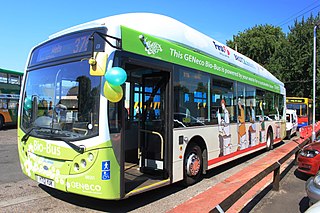 W
WBio-Bus is the UK's first bus powered entirely by human faeces and food waste.
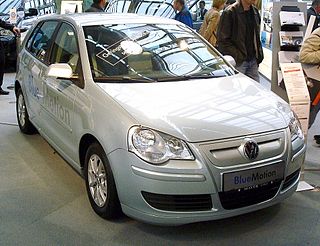 W
WBlueMotion is a tradename for certain car models from the Volkswagen Group with an emphasis on higher fuel efficiency.
 W
WChallenge X: Crossover to Sustainable Mobility, known more commonly as Challenge X, is a four-year competition series amongst engineering students from across North America. Its purpose is to advance vehicle technology towards a goal of sustainable mobility.
 W
WA compliance car is an alternative fuel vehicle that is explicitly designed to meet tightening government regulations for low-emission vehicle sales, while the automobile manufacturer restricts sales to specific jurisdictions to meet the rules, or limits production, or both.
 W
WThe ecoDemonstrator Program is a flight test research program of aircraft company Boeing, which has used a series of specially modified aircraft to develop and test aviation technologies designed to improve fuel economy and reduce the noise and ecological footprint of airliners. From 2012 through 2018, the five airplanes involved have tested 112 technologies: half remain in further development and a third are being implemented like iPad apps for pilot real-time information to reduce fuel use and emissions; custom approach paths to reduce community noise; and 777X cameras for ground navigation.
 W
WECOnetic is a tradename for certain car models produced by Ford of Europe, currently consisting of one model in each of the Fiesta, the Focus and the Mondeo range, with an emphasis on higher fuel efficiency and low-CO2 emissions.
 W
WIn automobile engineering, electric vehicle (EV) conversion is the replacement of a car's combustion engine and connected components with an electric motor and batteries, to create an all-electric vehicle.
 W
WFioravanti is an Italian automotive design studio in Moncalieri outside the city of Turin. The company began in 1987 as an architectural practice working on projects in Japan, and since 1991, it has focused its activities on automotive design.
 W
WThe fuel economy of an automobile relates distance traveled by a vehicle and the amount of fuel consumed. Consumption can be expressed in terms of volume of fuel to travel a distance, or the distance travelled per unit volume of fuel consumed. Since fuel consumption of vehicles is a significant factor in air pollution, and since importation of motor fuel can be a large part of a nation's foreign trade, many countries impose requirements for fuel economy. Different methods are used to approximate the actual performance of the vehicle. The energy in fuel is required to overcome various losses encountered while propelling the vehicle, and in providing power to vehicle systems such as ignition or air conditioning. Various strategies can be employed to reduce losses at each of the conversions between the chemical energy in the fuel and the kinetic energy of the vehicle. Driver behavior can affect fuel economy; maneuvers such as sudden acceleration and heavy braking waste energy.
 W
WA gas-guzzler, in informal language, is a vehicle that is perceived to consume a lot of fuel.
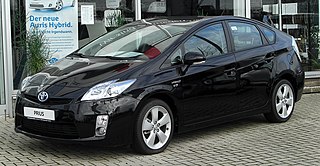 W
WThe Hybrid Scorecard was created by the Union of Concerned Scientists (UCS) to give consumers a comprehensive comparison of hybrid electric vehicles available in the U.S. market. The UCS Hybrid Scorecard ratings take into considerations fuel economy as rated by the U.S. Environmental Protection Agency (EPA); the environmental benefits as compared to its similar or closest conventional internal combustion engine counterpart; how cost-effectively a particular hybrid achieves its environmental performance; and premium features that are bundled on a hybrid as standard equipment raising its purchase price.
 W
WA hydrogen vehicle is a type of alternative fuel vehicle that uses hydrogen fuel for motive power. Hydrogen vehicles include hydrogen-fueled space rockets, as well as automobiles and other transportation vehicles. Power is generated by converting the chemical energy of hydrogen to mechanical energy, either by reacting hydrogen with oxygen in a fuel cell to power electric motors or, less commonly, by burning hydrogen in an internal combustion engine.
 W
WInMotion is a student team focused in electric racing and fast charging. InMotion is based in Helmond and is composed mostly of students from the Eindhoven University of Technology and Fontys University of Applied Sciences. The team was founded in 2012 by Albert Maas under the guidance of Maarten Steinbuch. In 2017, the Fusion, the team’s first car, was built. The Fusion is an electric formula car and holds the electric lap record in Circuit Zandvoort, Circuit Zolder and TT Circuit Assen. After the Fusion, the team developed a endurance race car, the Vision. Currently the team is working on a new car, a Ginetta G58, which has their Electric Refueling technology and is going to compete in the 24 Hours of Le Mans, in the Garage 56 class.
 W
WMiles per gallon gasoline equivalent is a measure of the average distance traveled per unit of energy consumed. MPGe is used by the United States Environmental Protection Agency (EPA) to compare energy consumption of alternative fuel vehicles, plug-in electric vehicles and other advanced technology vehicles with the energy consumption of conventional internal combustion vehicles rated in miles per U.S. gallon.
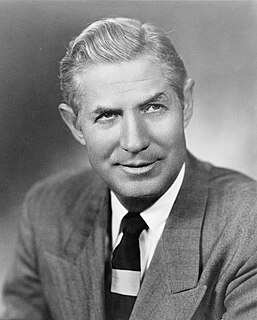 W
WThe Monroney sticker or window sticker is a label required in the United States to be displayed in all new automobiles and includes the listing of certain official information about the car. The window sticker was named after Almer Stillwell "Mike" Monroney, United States Senator from Oklahoma. Monroney sponsored the Automobile Information Disclosure Act of 1958, which mandated the disclosure of equipment and pricing information on new automobiles.
 W
WThe NASA X-57 Maxwell is an experimental aircraft being developed by NASA, intended to demonstrate technology to reduce fuel use, emissions, and noise. The first flight of the X-57 is scheduled to take place on 24 February 2022.
 W
WA natural gas vehicle (NGV) is an alternative fuel vehicle that uses compressed natural gas (CNG) or liquefied natural gas (LNG). Natural gas vehicles should not be confused with autogas vehicles powered by liquefied petroleum gas (LPG), mainly propane, which is a fuel with a fundamentally different composition.
 W
WA pedelec or EPAC, is a type of electric bicycle where the rider's pedalling is assisted by a small electric motor; thus it is a type of low-powered e-bike. However, unlike some other types of e-bikes, pedelecs are classified as conventional bicycles in many countries by road authorities rather than as a type of electric moped. Pedelecs include an electronic controller which cuts power to the motor when the rider is not pedalling or when a certain speed – usually 25 km/h (16 mph) or 32 km/h (20 mph) – is reached. Pedelecs are useful for people who ride in hilly areas or in strong headwinds. While a pedelec can be any type of bicycle, a pedelec city bike is very common. A conventional bicycle can be converted to a pedelec with the addition of the necessary parts, e.g., motor, battery, etc.
 W
WA people mover or automated people mover (APM) is a type of small scale automated guideway transit system. The term is generally used only to describe systems serving relatively small areas such as airports, downtown districts or theme parks.
 W
WA personal transporter is a class of compact, mostly recent, motorised micromobility vehicle for transporting an individual at speeds that do not normally exceed 25 km/h (16 mph). They include electric skateboards, kick scooters, self-balancing unicycles and Segways, as well as gasoline-fueled motorised scooters or skateboards, typically using two-stroke engines of less than 49 cc (3.0 cu in) displacement. Many newer versions use recent advances in vehicle battery and motor-control technologies. They are growing in popularity, and legislators are in the process of determining how these devices should be classified, regulated and accommodated during a period of rapid innovation.
 W
WA steam bus is a bus powered by a steam engine. Early steam-powered vehicles designed for carrying passengers were more usually known as steam carriages, although this term was sometimes used to describe other early experimental vehicles too.
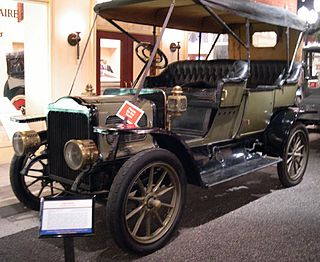 W
WA steam car is a car (automobile) propelled by a steam engine. A steam engine is an external combustion engine (ECE) in which the fuel is combusted outside of the engine, unlike an internal combustion engine (ICE) in which fuel is combusted inside the engine. ECEs have a lower thermal efficiency, but carbon monoxide production is more readily regulated.
 W
WSunmobile was a model of a solar-powered automobile. William G. Cobb of the General Motors Corporation built and demonstrated his 15-inch long model at the 1955 General Motors car show in Chicago on August 31, 1955. The automobile was a futuristic miniature representation to show the possibilities of solar energy. Since it was a miniature model, it could not be driven by a person.
 W
WThe Toyota iQ is an ultra-compact, front transverse engine, front-wheel-drive city car manufactured by Toyota and marketed in a single generation for Japan (2008–2016); Europe (2008–2015); and North America (2012–2015), where it was marketed as the Scion iQ. A rebadged variant was marketed in Europe as the Aston Martin Cygnet (2009–2013).
 W
WThe Wisconsin Hybrid Vehicle Team consists mainly of undergraduate students from the University of Wisconsin–Madison who work together to build a hybrid electric vehicle.
 W
WVectrix was an electric vehicle company based in Middletown, Rhode Island, United States, with research and development facilities in New Bedford, Massachusetts and an assembly plant in Wrocław, Poland. Vectrix ceased all US operations as of December 31, 2013. The company filed for bankruptcy and final liquidation in March 2014.
 W
WZ Electric Vehicle Corporation (ZEV) is an American owned and operated electric scooter manufacturer and distributor based in Morgantown, West Virginia, with test facilities in Waynesboro, Pennsylvania. Its vehicles are assembled in both the US and China with assembly shops in the US, Australia, and Vietnam. ZEV says its electric scooters are the world's most powerful, fastest, and have the longest range.
 W
WThe Zerotracer is a purpose built Electric vehicle for the Zero Emissions Race which went around the world in 2010/11. The vehicle seats two in a closed cabin, while its driving characteristics are more similar to a motorbike. The race started under UNEP patronage on 16 August 2010 in front of the Palace of Nations at Geneva where it ended on 24 February 2011 completing 80 days of travel – inspired by Jules Verne's novel, Around the World in Eighty Days. Of the only three vehicles completing the race, Zerotracer accumulated the highest score of points to win.